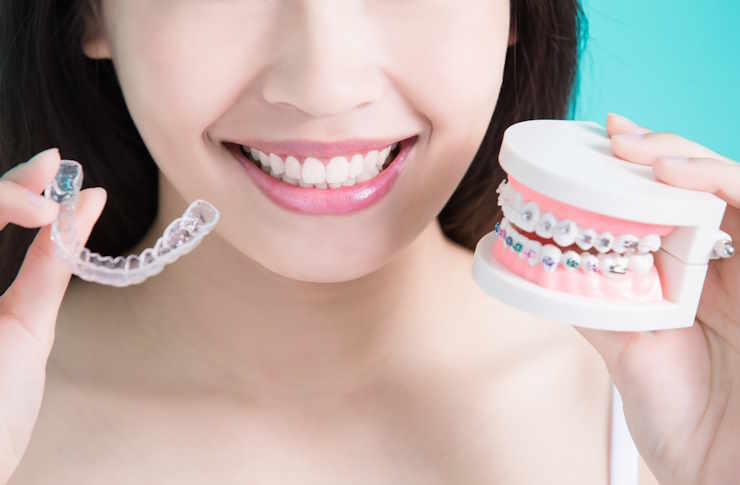Why More People in the UK Are Learning About Invisible Teeth Braces
A confident smile is something many people value, and teeth alignment plays a key role in dental appearance and health. In the United Kingdom, interest in invisible teeth braces is increasing as more individuals look for subtle ways to straighten their teeth. These modern orthodontic options allow patients to improve dental alignment without the appearance of traditional metal braces. Learning about available treatments and understanding how they work can help individuals make informed choices about their oral health.

What Are Invisible Orthodontics UK Options Available Today?
Invisible orthodontics in the UK encompasses several treatment approaches designed to straighten teeth without the visual impact of traditional metal braces. The most common types include clear aligner systems made from transparent plastic that fit snugly over teeth, ceramic braces that use tooth-colored brackets, and lingual braces placed behind the teeth. These options have gained traction particularly because they offer discreet treatment while achieving similar results to conventional orthodontics. Clear aligner systems have become especially popular as they can be removed for eating and cleaning, providing both aesthetic and practical advantages to UK patients seeking teeth alignment solutions.
How Has Adult Orthodontic Treatment Evolved in Recent Years?
Adult orthodontic treatment has seen remarkable evolution in the UK dental landscape. While previous generations might have considered braces exclusively for adolescents, today’s adults represent a significant proportion of orthodontic patients. This shift has occurred alongside the development of less visible treatment options that better accommodate professional and social concerns. Modern invisible aligners address the aesthetic hesitations many adults previously had about orthodontic treatment. Treatment timelines have also become more manageable, with many cases showing results in 12-18 months rather than the multi-year commitments often associated with traditional braces. This evolution has made teeth straightening more accessible and appealing to UK adults of all ages.
What Should You Expect When Visiting Dental Aligner Clinics?
When visiting dental aligner clinics in the UK, patients typically begin with a comprehensive consultation that includes oral examination and digital scanning. Unlike traditional orthodontic appointments that might involve uncomfortable impression molds, many modern dental aligner clinics utilize 3D imaging technology to create precise digital models of teeth. These digital impressions help practitioners develop customized treatment plans and even provide visual projections of expected outcomes. Most clinics offer payment plans and treatment monitoring through a combination of in-person appointments and, increasingly, remote check-ins using smartphone applications that allow patients to share progress photos with their orthodontist.
How Do Various Teeth Alignment Solutions Compare?
Teeth alignment solutions vary considerably in approach, visibility, maintenance requirements, and treatment experience. Invisible aligners offer removability for eating and oral hygiene but require discipline in wearing them 20-22 hours daily. Ceramic braces provide a fixed solution that’s less visible than metal braces but still attached to teeth throughout treatment. Lingual braces remain completely hidden behind teeth but may temporarily affect speech and can be more challenging to clean. Each option comes with specific advantages for different lifestyle needs, aesthetic preferences, and orthodontic conditions. The suitability of each solution depends on the complexity of the alignment issues, with some severe cases still requiring traditional approaches despite advances in invisible orthodontic technology.
What Makes Clear Aligners Increasingly Popular Among UK Residents?
Clear aligners have gained remarkable popularity among UK residents for several compelling reasons. The discretion they offer appeals to professionals and those concerned about appearance during treatment. The removable nature of aligners allows for unrestricted eating and simpler oral hygiene maintenance compared to fixed braces. Additionally, many patients report less discomfort with clear aligners than with traditional braces that can cause mouth sores and sharp edges. The technological aspect has also attracted tech-savvy consumers who appreciate the digital planning process and the ability to visualize treatment outcomes before committing. Many UK residents also value the typically fewer required in-person appointments, which can be particularly beneficial for those with busy schedules or living in areas with limited access to specialist orthodontists.
What Are the Costs and Providers of Invisible Teeth Aligners in the UK?
The cost of invisible teeth aligners in the UK varies depending on treatment complexity, provider type, and specific alignment system chosen. Below is a comparison of some prominent options available to UK consumers:
| Provider | Treatment Type | Average Cost Range | Notable Features |
|---|---|---|---|
| Invisalign | Full clear aligner system | £2,500 - £5,500 | Established brand, comprehensive treatment options, in-person dental supervision |
| SmileDirectClub | Remote-monitored clear aligners | £1,539 - £1,799 | Primarily remote treatment with limited in-person visits |
| ClearCorrect | Full clear aligner system | £2,000 - £4,500 | Similar to Invisalign with slightly different materials |
| Your Dentist | In-office clear aligner systems | £1,800 - £5,000 | Treatment provided by local dentists rather than orthodontic chains |
| NHS Orthodontic Treatment | Limited to severe cases | £0 - £282.80 (if eligible) | Typically only available for complex cases meeting medical necessity criteria |
Prices, rates, or cost estimates mentioned in this article are based on the latest available information but may change over time. Independent research is advised before making financial decisions.
How Do Results and Treatment Experience Compare?
The results and treatment experiences with invisible braces generally receive positive feedback, though outcomes naturally vary based on individual cases and compliance. Most patients achieve their desired results when following treatment protocols precisely. The treatment experience typically involves an initial adjustment period of about one week when patients may experience mild discomfort and slight speech changes while adapting to wearing aligners. Subsequent aligner changes (usually every 1-2 weeks) may cause temporary pressure sensations for 1-3 days. Many UK patients report that the aesthetic benefits and flexibility of removable aligners outweigh these temporary adjustment periods. However, successful treatment requires commitment to wearing aligners for the prescribed duration daily and maintaining excellent oral hygiene practices throughout the treatment period.
This article is for informational purposes only and should not be considered medical advice. Please consult a qualified healthcare professional for personalized guidance and treatment.




